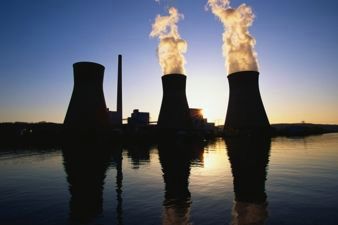Nairobi – Rapidly rising prices – metal up by 176 per cent, rubber by 350 per cent, and energy by 260 per cent since 2000 – signal a potentially crippling trend of increasing costs as current consumption patterns rapidly deplete the world’s non-renewable resources, according to a new report released on June 6.
“Decoupling 2: Technologies, Opportunities and Policy Options”, produced by the United Nations Environment Programme-hosted International Resource Panel (IRP), says the numbers demonstrate that the negative effects of unsustainable use of natural resources are already being felt, further backing the argument with a rise in volatility of food prices: 22.4 per cent from 2000 to 2012 compared to 7.7 per cent from 1990 to 1999.
The report says that harnessing existing technologies and appropriate policies to increase resource productivity could save up to US $ 3.7 trillion globally each year and insulate future economic growth from the harmful effects of resource scarcity, price volatility and environmental impacts.
Many decoupling technologies and techniques that deliver up to ten times more resource productivity are already available, allowing countries to pursue their development strategies while significantly reducing resource use and negative environmental impacts.
The potential to reduce energy demand through improved efficiency is around 50 to 80 per cent for most production and utility systems. Some 60 to 80 per cent improvements in energy and water efficiency are commercially viable in sectors such as construction, agriculture, hospitality, industry and transport.
Advanced furnace technology could achieve up to a 40 per cent reduction in energy intensity for zinc, tin, copper, and lead smelting and processing. The report argues that existing barriers to decoupling can be removed, notably subsidies for energy and water use, outdated regulatory frameworks and technological biases. Such policy change can create stable, successful economies over the long term.
“The worldwide use of natural resources has accelerated – annual material extraction grew by a factor of eight through the twentieth century – causing severe environmental damage and depletion of natural resources,” said UN Under-Secretary-General and UNEP Executive Director Achim Steiner. “Yet this dangerous explosion in demand is set to accelerate as a result of population growth and rising incomes.”
“Dramatic improvements in resource productivity are a vital element of a transition to a Green Economy that will lift one billion people out of poverty and manage the natural resources required for the wellbeing of nine billion people by 2050,” he added. “This requires an urgent rethink of current practices, backed by a massive investment in technological, financial and social innovation.”
The report builds on an earlier study, which warned that developed nation consumption patterns and increases in population and prosperity will put humanity on track to consume 140 billion tonnes of minerals, ores, fossil fuels and biomass per year by 2050 unless economic growth is decoupled from resource consumption. This is three times the levels of consumption in 2000, and most likely exceeds all existing available resources and the limits of the planet to absorb the impacts of extraction and use.
For example, a shortage of some of the world’s key metals may be felt within the next 50 years, affecting many industries; approximately 60 per cent of the ecosystem services that support life on Earth have already been seriously degraded; and global demand for water is expected to rise by 40 per cent so that in 20 years available supplies will likely only satisfy 60 per cent of world demand.
By adopting decoupling technologies, developing countries could cut their annual energy demand growth from 3.4 to 1.4 per cent over the next 12 years, while meeting their development goals. This would leave energy consumption some 22 per cent lower than it would otherwise have been – a reduction equivalent to the entire energy consumption of China today.
The report shows that much of the policy design and technological knowledge needed to achieve decoupling already exists. Many countries have tried them out with tangible results, encouraging others to replicate and scale up such practices and successes. For example:
- The Rathkerewwa Desiccated Coconut Industry (RDCI) in Sri Lanka cut 12 per cent off energy use, 8 per cent off material use and 68 per cent off water use, while increasing production 8 per cent by changing its practices. For a total investment of less than US $ 5,000, an annual financial return of about US $ 300,000 was reported.
- Industrial electric motors in China account for around 60 per cent of total electricity consumption. A pilot study at China’s second-largest oil field found potential to save more than 400 million kilowatt hours (kWh) of electricity per year, with recovery of the initial investment achieved within 1.6 years. High-efficiency motors could save 28 to 50 per cent of motor energy use, with a typical payback period of one to three years.
- Cape Town in South Africa is conducting a 10-year traffic signal upgrade programme, retrofitting 120 intersections per year with LED lamps. The LED lamps consume almost 90 per cent less electricity than the old lamps, yet produce the same lighting service. The programme is expected to save US $ 2.9 million and 39,000 tonnes of CO2 emissions.



















